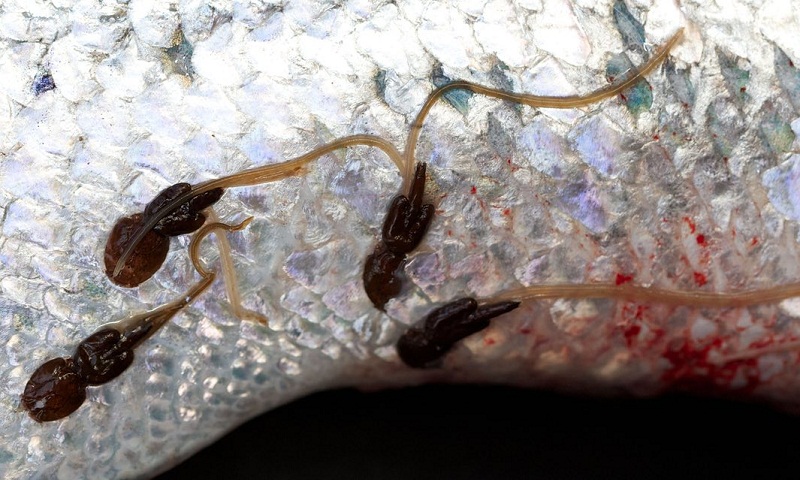Salmon farming in crisis: ‘We are seeing a chemical arms race in the seas’

Rare only 40 years ago, farmed salmon is now taken for granted in our kitchens. But the growth of the industry has come at great cost. Every day, salmon farmers across the world walk into steel cages – in the seas off Scotland or Norway or Iceland – and throw in food. Lots of food; they must feed tens of thousands of fish before the day is over. They must also check if there are problems, and there is one particular problem they are coming across more and more often. Six months ago, I met one of these salmon farmers, on the Isle of Skye. He looked at me and held out a palm – in it was a small, ugly-looking creature, all articulated shell and tentacles: a sea louse. He could crush it between his fingers, but said he was impressed that this parasite, which lives by attaching itself to a fish and eating its blood and skin, was threatening not just his own job, but could potentially wipe out a global multibillion-dollar industry that feeds millions of people. “For a wee creature, it is impressive. But what can we do?” he asks. “Sometimes it seems nature is against us and we are fighting a losing battle. They are everywhere now, and just a few can kill a fish. When I started in fish farming 30 years ago, there were barely any. Now they are causing great problems.” Lepeophtheirus salmonis, or the common salmon louse, now infests nearly half of Scotland’s salmon farms. Last year lice killed thousands of tonnes of farmed fish, caused skin lesions and secondary infections in millions more, and cost the Scottish industry alone around £300m in trying to control them. Scotland has some of the worst lice infestations in the world, and last year saw production fall for the first time in years. But in the past few weeks it has become clear that the lice problem is growing worldwide and is far more resistant than the industry thought. Norway produced 60,000 tonnes less than expected last yearbecause of lice, and Canada and a dozen other countries were all hit badly. Together, it is estimated that companies across the world must spend more than £1bn a year on trying to eradicate lice, and the viruses and diseases they bring. As a result of the lice infestations, the global price of salmon has soared, and world production fallen. Earlier this year freedom of information [FoI] requests of the Scottish government showed that 45 lochs had been badly polluted by the antibiotics and pesticides used to control lice – and that more and more toxic chemicals were being used.
Read More: http://www.theguardian.com/environment/2017/apr/01/is-farming-salmon-bad-for-the-environment#img-2

